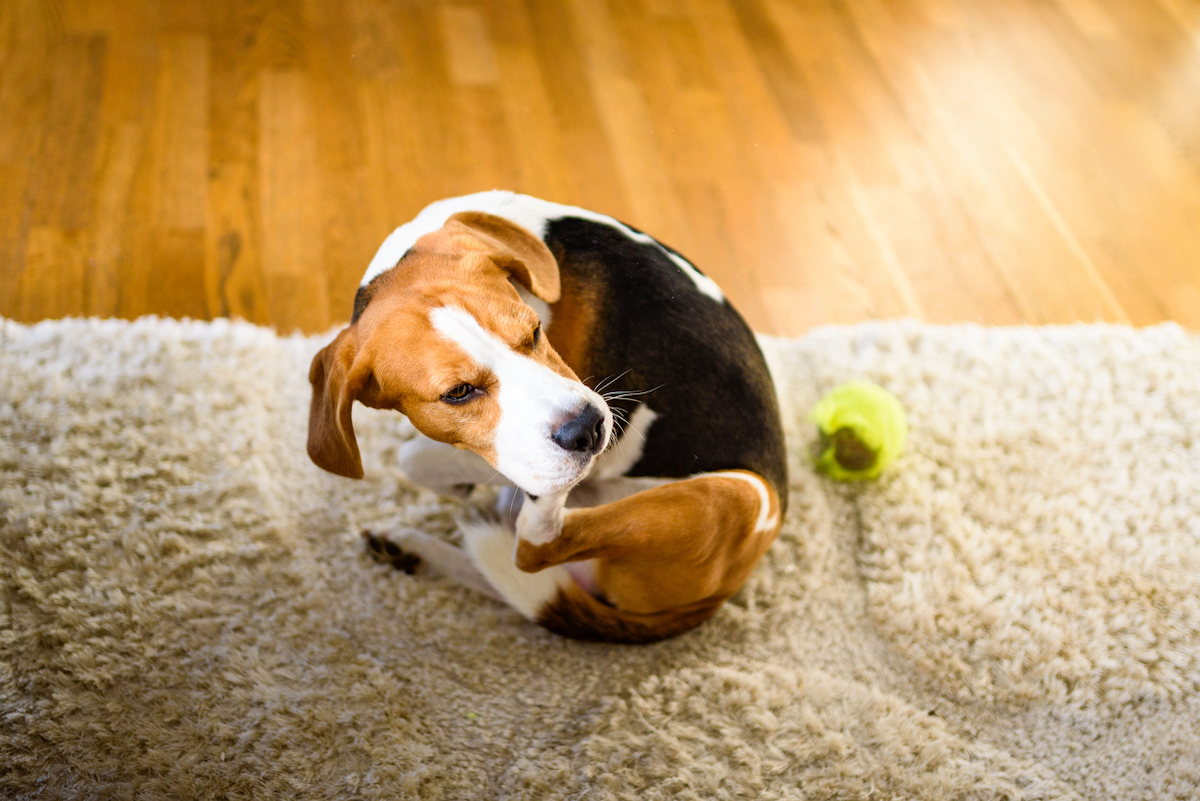

We may earn revenue from the products available on this page and participate in affiliate programs. Learn More ›
Fleas are invasive, bloodsucking pests that, in addition to causing itchy sores on pets and people, can carry pathogens that can cause a number of illnesses, including plague, cat scratch disease, endocarditis, spotted fever, rickettsialpox, and typhus. Furthermore, both humans and animals may suffer from flea allergy dermatitis, which is a particularly painful and itchy reaction to flea saliva.
Fleas are a nuisance often brought into the home by pets who pick them up them outside. “Raccoons, squirrels, deer, mice, rabbits, and foxes can all have fleas,” says Kyle Morgan, founder and owner of Care Pest Pros in Spicewood, Texas. “Fleas drop off these animals and hop on the family pet, who brings them inside,” he adds. The pets then loll about on the carpet, and boom!—you have fleas in the carpet.
To make matters worse, it’s possible to have fleas in the carpet even if you don’t have pets. Humans can pick them up outside and bring them in; a friend may stop by for a quick visit, dog in tow; or flea-ridden animals may take up residence in your attic. If you live in an apartment, the previous tenant may have had pets. No matter how they got there, here are some strategies for getting fleas out of your carpet, and out of your house.
Tools & Materials
Bobvila.com may earn a commission from purchases made through these links.
What do fleas look like?
As with many insects, fleas go through several stages in their life cycle, which, depending on conditions, can last anywhere from 20 to 35 days. While you should keep an eye out for all stages, the adults may be the easiest to spot, given their dark color and jumpy nature.
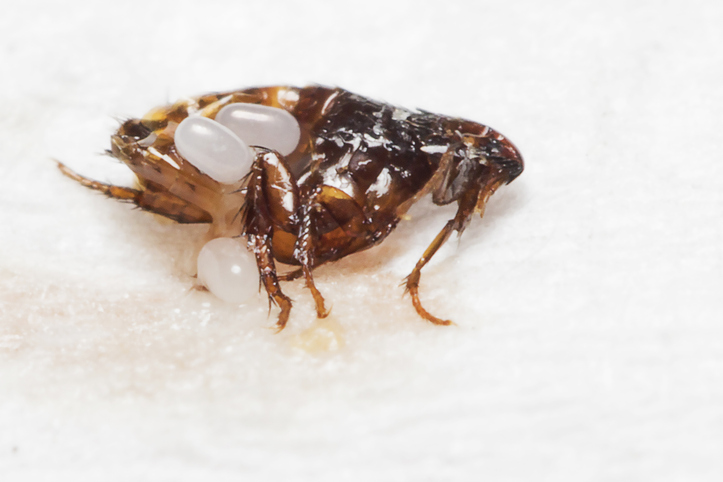
Eggs:
- White
- Oval
- Smooth
- Nearly microscopic (0.5mm)

Larvae:
- ¼ inch long
- Whitish
- Worm-like
- Hairy
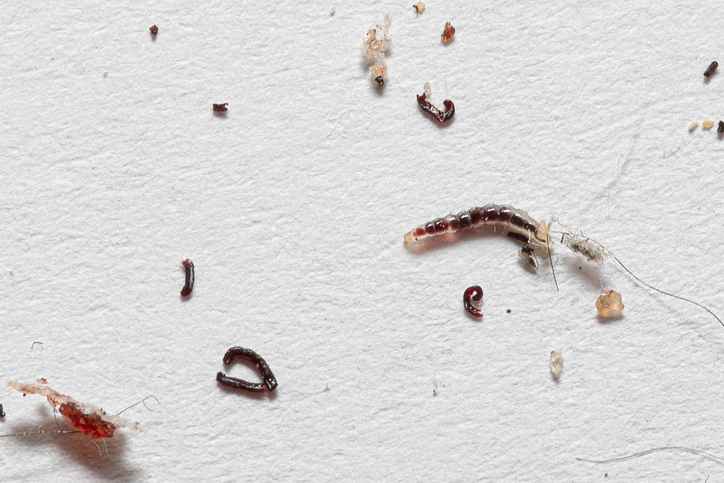
Pupae:
- Encased in sticky cocoon that’s covered with debris
- About ⅛ inch long (roughly the size of an adult)
- Transitions from white to yellow to brownish color
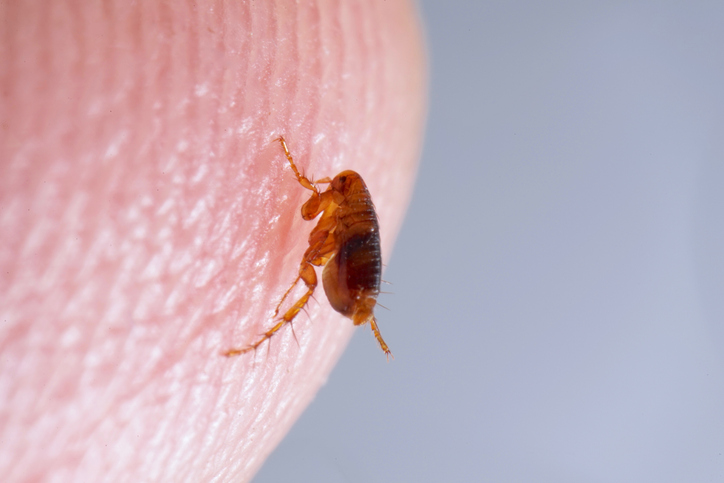
Adults:
- ⅛ inch long
- Oval
- Brown
- Thin
- Wingless
- Large back legs that enable them to jump
- Backward-facing spines that allow them to “grip” animal hair
Before You Begin
Try to identify where the fleas are living before you start cleaning. While fleas can infest carpeting throughout the home, they really like a warm host. Pets’ favorite nooks and, unfortunately, places that people frequent, such as beds and couches, are pretty common hiding spots. Fleas are more likely to hang out in carpeting in these areas than in areas rarely visited by pets or people.
6 DIY Methods for Getting Rid of Fleas in Carpeting
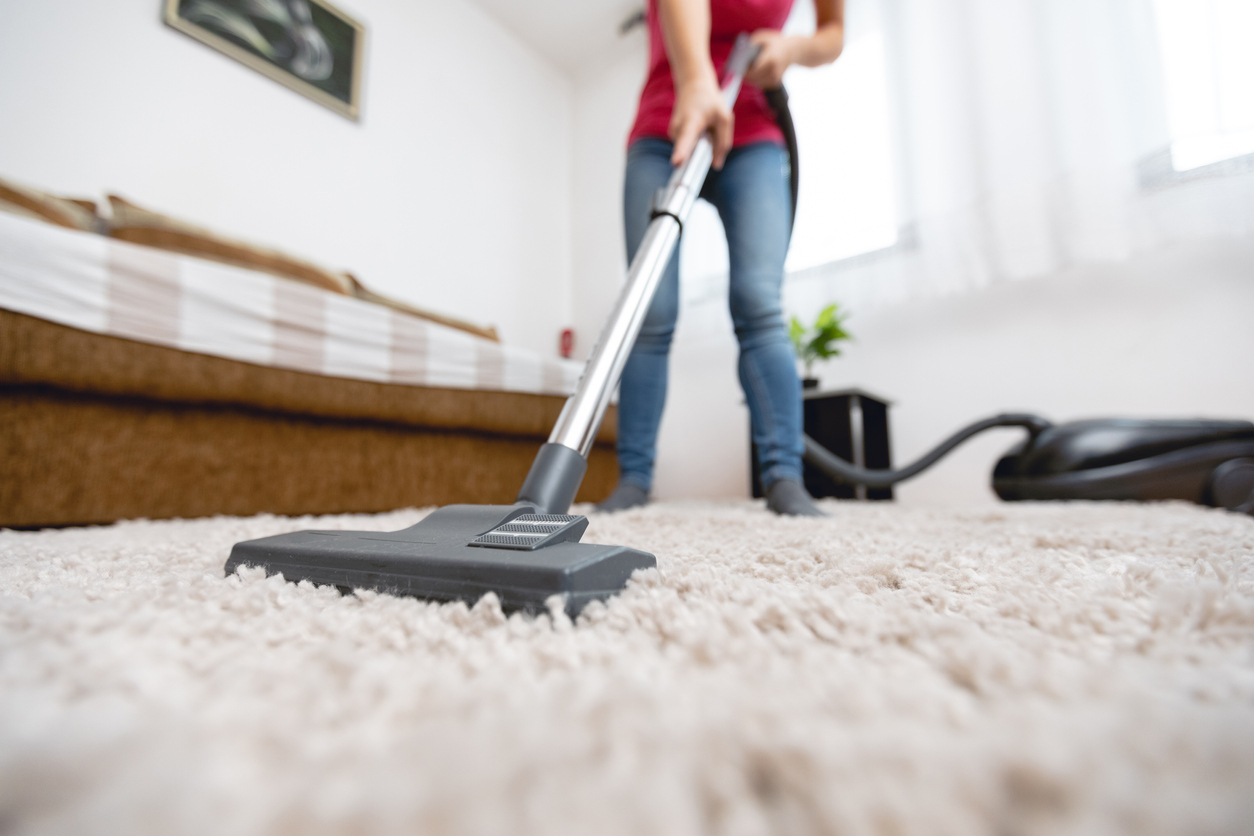
A holistic approach is best for killing fleas in carpet. You’ll want to tackle the problem from several angles, so for best results, consider employing any or all of these methods for killing fleas.
1. Vacuum your carpet often and thoroughly.
A vacuum cleaner can remove fleas. Stay ahead of the problem by vacuuming regularly and often. “Vacuum everything thoroughly, and then do it again,” Morgan says. Use a hose vacuum attachment and crevice tool to get near baseboards and to reach all of the hidden carpet beneath or between furniture. If pets like to snuggle down behind the couch, make sure to vacuum there too. Don’t forget rugs, pet bedding, and pet furniture, especially if it’s on the floor.
After vacuuming, take the vacuum outside, remove the bag, put the contents inside a sealed bag, and put that bag in a garbage can outside. Do not leave the bag in the vacuum or leave the sealed bag inside the house. Those pesky fleas can travel back through the vacuum’s system and onto pets, people, and carpeting. If your vacuum has a dirt-collection cup or canister, empty it, wash it, and let it air-dry before reattaching.
RELATED: Wipe Out Pet Hair With the Best Cordless Vacuums
2. Vacuum and steam-clean all upholstered items in the house.
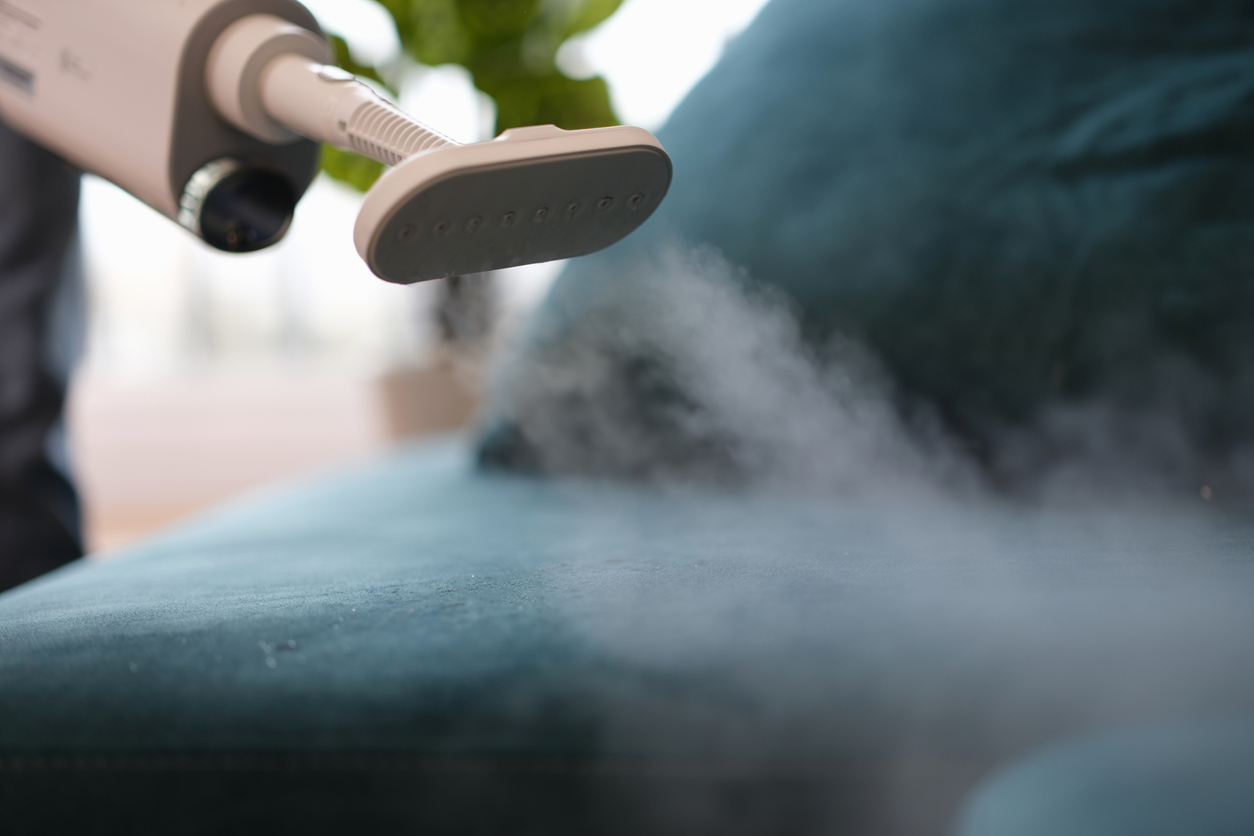
If fleas have migrated to upholstery, they can easily make their way back into the carpet. To help minimize the migration, vacuum upholstered furniture. While the vibrations of the vacuum may be enough to make the fleas reveal themselves, also use a steam cleaner to reach more deeply into the fabric and cushions. Once you’ve gotten rid of the fleas, regularly vacuum the upholstery to prevent future outbreaks.
RELATED: How To: Get Rid of Fleas in Your Home
3. Spray carpet and furniture.
Apply a spray treatment to the carpet and furniture to remove any stubborn fleas. These treatments sink into the carpet to get rid of current infestations and can help prevent future infestations.
You might use a spray that contains chemicals such as methoprene, which ends an infestation by disrupting the flea’s life cycle, or one that contains an insecticide such as etofenprox. Some sprays include both types of compounds. If you prefer, you can opt for a spray that relies on natural ingredients, such as cedarwood oil, to kill fleas.
Before applying any product, test the spray in an inconspicuous area to ensure it won’t harm carpeting or upholstery. A few sprays can also be applied directly to pets, but most cannot. Always read application instructions carefully, and note that carpet flea treatments may need to sit on the carpet for a few days before you see results.
RELATED: The Best Flea Sprays
4. Bathe the pets.
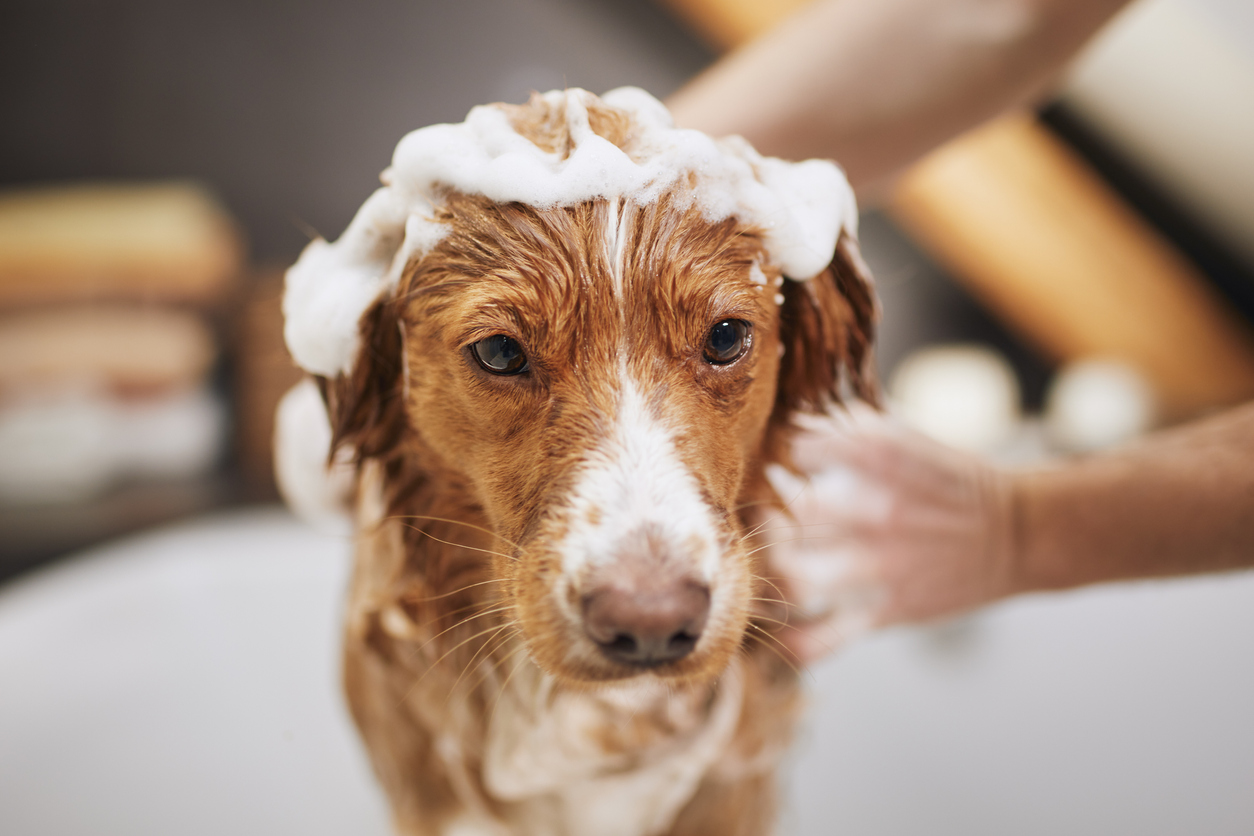
You may need to bathe Fido—and dare we say, Kitty too—more regularly if fleas are prevalent in your home. Ask your vet to recommend a flea shampoo that will kill the critters. After each bath, apply a flea treatment, whether a topical medication, a flea collar, or both.
5. Sprinkle diatomaceous earth.
While our expert doesn’t generally recommend using diatomaceous earth indoors to kill pests, some folks swear by its ability to kill fleas in the carpet before they reach the egg-laying phase. Diatomaceous earth is made from the abrasive particles of long-dead single-celled organisms called diatoms. These particles attach to the flea’s exoskeleton and absorb moisture from the body until the flea dries up and dies.
To use diatomaceous earth, remove pets from the area, don gloves and a face mask, and sprinkle the fine powder on your carpet, hardwood floors, baseboards, and upholstery. Leave it for 1 to 3 days, or for as long as you can bear the mess. Diatomaceous earth can be used on pets, but check with your veterinarian first, as it can dry the skin. Use only food-grade diatomaceous earth inside a home.
RELATED: The Best Flea Sprays
6. Consider other treatments.
Some homeowners have had luck with baking soda, salt, or boric acid. To use any one of these as a flea-killing agent, sprinkle it liberally into the carpet and then brush it in until it gets deep within the fibers. Leave the treatment on the carpet for 48 hours and then vacuum thoroughly. Repeat as necessary until the infestation is quelled. It should be noted that experts believe that it’s not the baking soda, salt, or boric acid that kills the fleas, it’s the vacuuming that removes them—but there’s no harm in trying!
